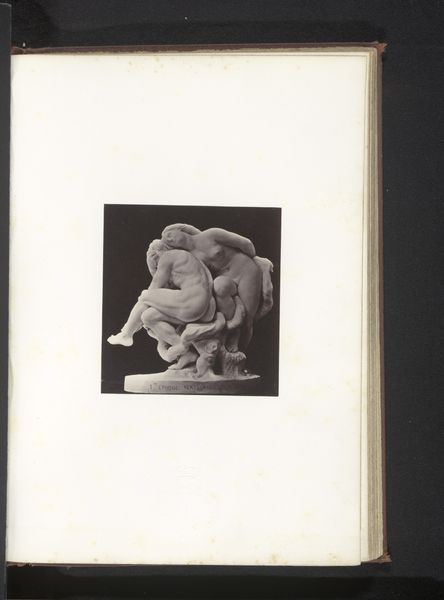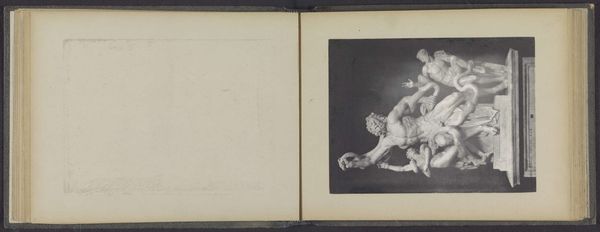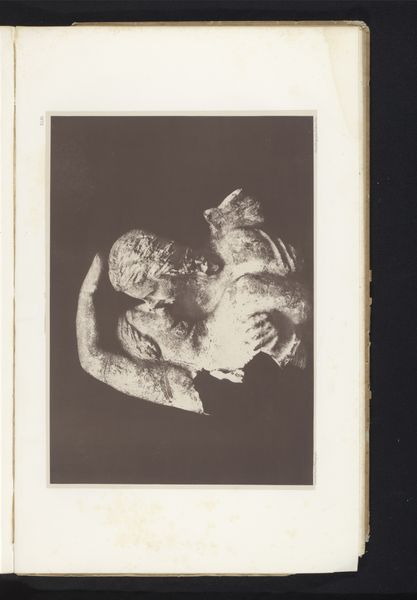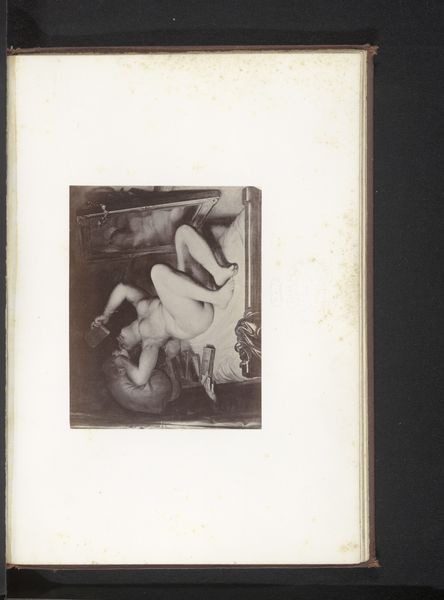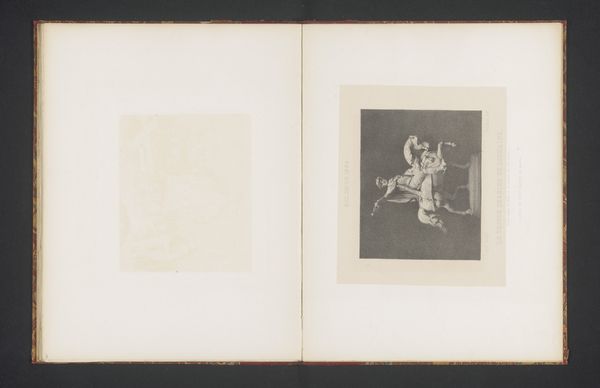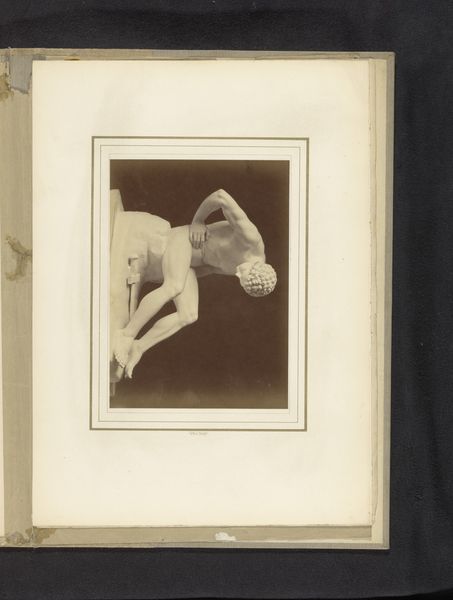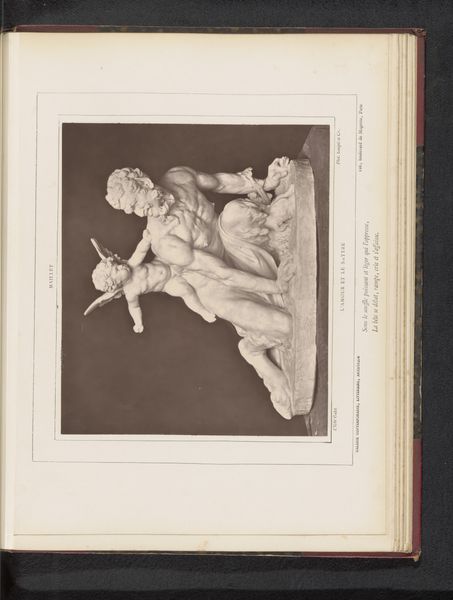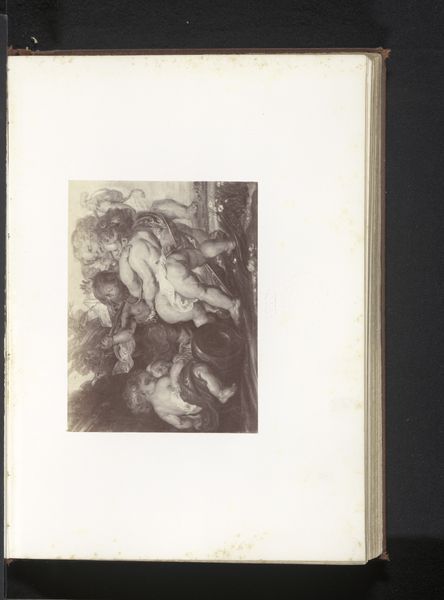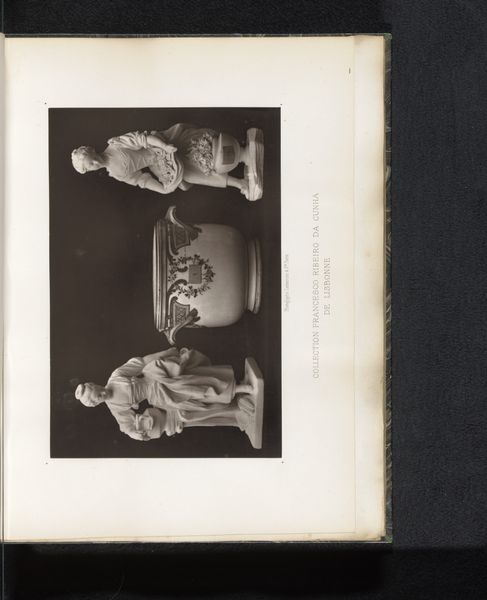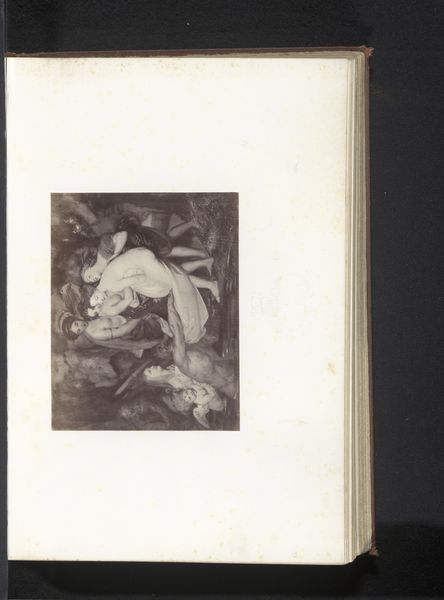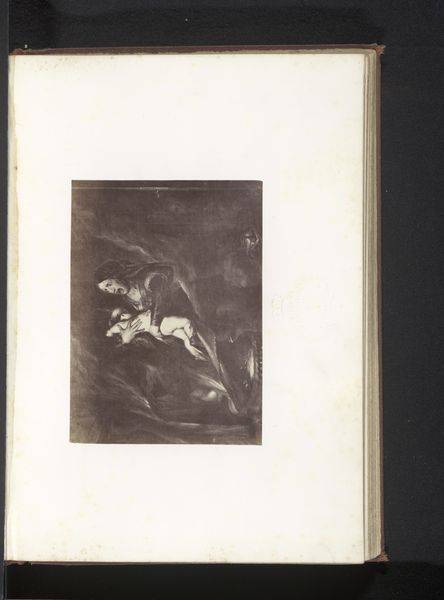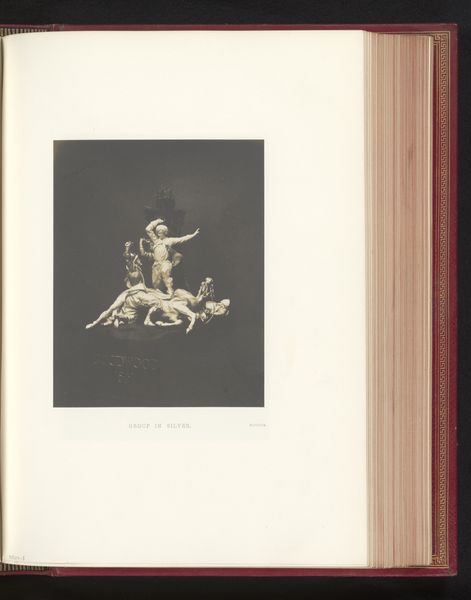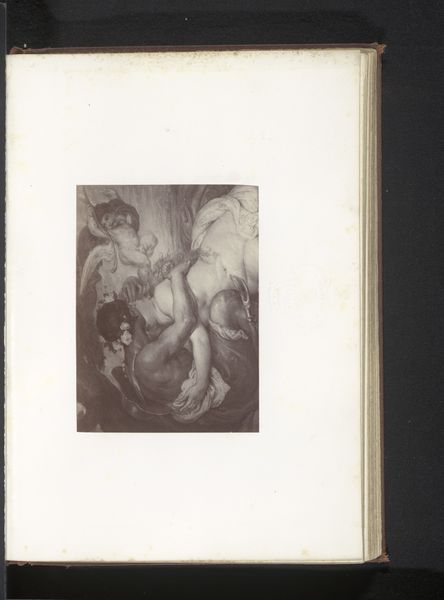
Dimensions: height 125 mm, width 114 mm
Copyright: Rijks Museum: Open Domain
Curator: There is a rawness, almost an ugly physicality, to the image of the sculpture here. It feels more brutal struggle than idealized combat. Editor: I am pleased that you mention struggle. What you see here is actually a photograph of a sculpture made by Antoine Wiertz, entitled “Sculptuur Tweede periode. De strijd," translated as “Sculpture Second period. The struggle” This photograph was taken sometime before 1868. Curator: A telling title, don’t you think? The fact that it’s “second period” implies some shift in style, a grappling, perhaps, with earlier forms of representation. A visual wrestling of intent. Editor: And a material one! Look closely at how Wiertz captures that physicality. What medium could capture the contorted strain of bodies locked in a tussle like this? I want to know how he manipulated the material, how much the material guided and defined his intentions! It certainly looks like stone of some sort. But what kind? And what tools did he use? I can’t see much of the tool markings on the stone with the light provided in this photo... Curator: Precisely! The figures feel trapped, not just by each other, but by their own excess. There’s a moral dimension here, isn’t there? This is a depiction of primal forces—of appetite and ego warring for dominance. Think about what historical struggles might it echo? I’m particularly keen to wonder about the revolutions rippling through Europe in 1848. It looks violent and unstable—and I see a strong continuity between struggle then and now. It looks like two men with a kid getting mauled on top. Is it the artist himself trying to see which political view to adopt in order to maintain success? I find his composition truly a mirror of constant shifting ideologies... Editor: I think, though, if we look to the historical production itself and maybe even look closer into the way stone carvers made sculptures during that period—especially during Wiertz’s timeframe, we might understand the constraints and motivations for making works this way, which often involved an elaborate support staff who often get neglected in favor of the great artists like Antoine Wiertz. So it looks more economical in many ways to discuss the studio that helped to make something like this become manifest rather than the lone genius mythologizing you are leaning towards. Curator: Ah, a worthy and productive tangent indeed. Regardless, perhaps this image serves as a reminder that some struggles remain eternal. Editor: Absolutely. Seeing this photo as evidence is helpful towards material processes of production in this timeframe as well, instead of only just visual, cultural and social representation.
Comments
No comments
Be the first to comment and join the conversation on the ultimate creative platform.
